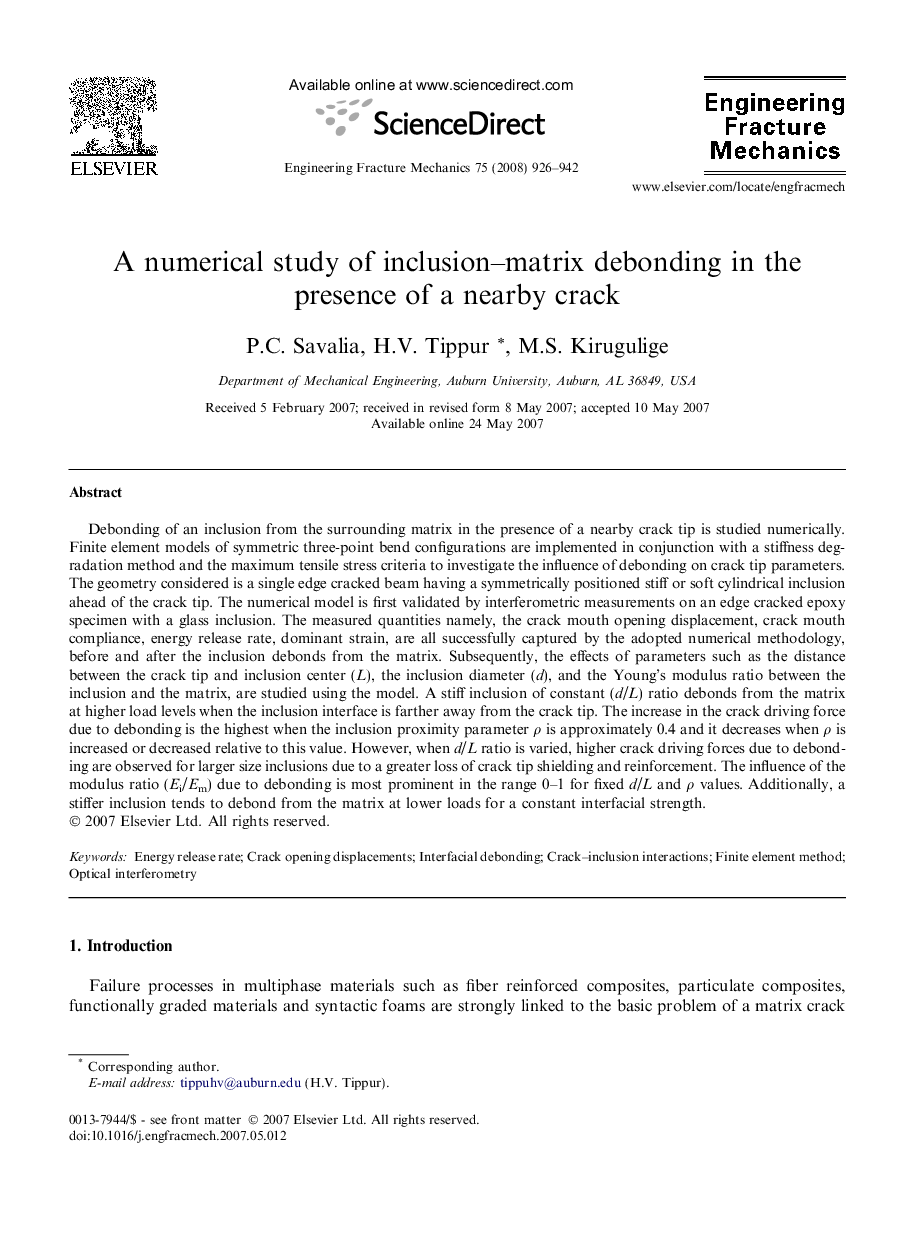| Article ID | Journal | Published Year | Pages | File Type |
|---|---|---|---|---|
| 771909 | Engineering Fracture Mechanics | 2008 | 17 Pages |
Debonding of an inclusion from the surrounding matrix in the presence of a nearby crack tip is studied numerically. Finite element models of symmetric three-point bend configurations are implemented in conjunction with a stiffness degradation method and the maximum tensile stress criteria to investigate the influence of debonding on crack tip parameters. The geometry considered is a single edge cracked beam having a symmetrically positioned stiff or soft cylindrical inclusion ahead of the crack tip. The numerical model is first validated by interferometric measurements on an edge cracked epoxy specimen with a glass inclusion. The measured quantities namely, the crack mouth opening displacement, crack mouth compliance, energy release rate, dominant strain, are all successfully captured by the adopted numerical methodology, before and after the inclusion debonds from the matrix. Subsequently, the effects of parameters such as the distance between the crack tip and inclusion center (L), the inclusion diameter (d), and the Young’s modulus ratio between the inclusion and the matrix, are studied using the model. A stiff inclusion of constant (d/L) ratio debonds from the matrix at higher load levels when the inclusion interface is farther away from the crack tip. The increase in the crack driving force due to debonding is the highest when the inclusion proximity parameter ρ is approximately 0.4 and it decreases when ρ is increased or decreased relative to this value. However, when d/L ratio is varied, higher crack driving forces due to debonding are observed for larger size inclusions due to a greater loss of crack tip shielding and reinforcement. The influence of the modulus ratio (Ei/Em) due to debonding is most prominent in the range 0–1 for fixed d/L and ρ values. Additionally, a stiffer inclusion tends to debond from the matrix at lower loads for a constant interfacial strength.
